|
|
|
Sort Order |
|
|
|
Items / Page
|
|
|
|
|
|
|
| Srl | Item |
| 1 |
ID:
098413
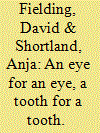

|
|
|
|
|
| Publication |
2010.
|
| Summary/Abstract |
The authors analyse newly collected time-series data measuring the dimensions of violent political conflict in Egypt. Attention is focused on the interaction between politically motivated attacks by Islamists and the counter-insurgency measures used by the Egyptian government. Both insurgency and counter-insurgency are multidimensional. Insurgency includes attacks on tourists, on Egyptian civilians and on security forces. Counter-insurgency includes arrests and attacks on militants. To some extent, the dynamics of insurgency and counter-insurgency can be described by two distinct cycles of violence: one related to highly politicized activities on both sides, and another related to less explicitly political activities. However, the two cycles are inter-related, leading to complex and asymmetric dynamics in the relationships between the different dimensions of the conflict. The authors find that the combination of political repression and military counter-insurgency measures employed by the Egyptian government has the potential to exacerbate rather than reduce political violence. On the other hand, the overall level of conflict intensity in Egypt can be mitigated by food subsidies. Finally, the existence of significant spillovers from upsurges in the Israeli-Palestinian conflict shows the regional importance of reaching a Middle East peace agreement.
|
|
|
|
|
|
|
|
|
|
|
|
|
|
|
|
| 2 |
ID:
122928
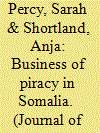

|
|
|
|
|
| Publication |
2013.
|
| Summary/Abstract |
This article argues that understanding why Somali piracy has resisted control efforts requires understanding that it is a criminal business rather than a conventional international security problem. We statistically model Somali piracy and draw two conclusions: first, piracy increases with economic stability, and second, naval interdiction efforts are stabilising but not significantly reducing piracy. We argue that these conclusions are not surprising if piracy is understood as an organised crime. Our argument has four components. First, Somali piracy is a land-based problem, and naval control mechanisms are not deterring pirates. Second, improving Somalia's anarchic political situation will not necessarily stop piracy: our statistical analysis demonstrates that piracy is a business which improves with a more stable operating environment. Third, piracy is organised criminal activity, and like other organised crime groups, will be difficult to control, especially if it becomes embedded in state structures. Finally, we argue that few of the relevant players have any real incentives to alter their behaviour.
|
|
|
|
|
|
|
|
|
|
|
|
|
|
|
|
| 3 |
ID:
117634
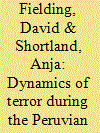

|
|
|
|
|
| Publication |
2012.
|
| Summary/Abstract |
The international community has a declared intention to protect civilians from deliberate violence in civil conflicts. The optimal type of foreign intervention and its optimal timing are likely to depend on the combat strategies of the belligerents. Weak belligerents unable to provide economic incentives and security guarantees to civilians often follow a strategy of intimidation and terror. In this case, foreign financial support for one side could affect the strategies of both sides in several different ways, and the interaction between the two sides' strategies could magnify the resulting impact on civilian casualties. Using a new monthly time-series dataset, we explore the factors associated with variations in the intensity of civilian abuse by participants in the guerrilla war in Peru during the 1980s and 1990s. We show that an increase in civilian abuse by one side was strongly associated with subsequent increases in abuse by the other. In this type of war, foreign intervention could substantially reduce the impact on civilians of a sudden rise in conflict intensity, by moderating the resulting 'cycle of violence'. In practice, foreign interventions had a mixed record in Peru: financial support for the Peruvian military raised the level of violence against civilians, but counter-narcotics aid and development aid reduced it. These effects are consistent with a model in which different types of intervention have different effects on belligerents' resource capacity and on the opportunity cost of fighting.
|
|
|
|
|
|
|
|
|
|
|
|
|
|
|
|
| 4 |
ID:
103184
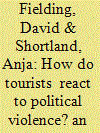

|
|
|
|
|
| Publication |
2011.
|
| Summary/Abstract |
This paper uses a detailed database of political violence in Egypt to study European and US tourists' attitudes towards a conflict region. We study the heterogeneous impacts of different dimensions of political violence and counter-violence on tourist flows to Egypt in the 1990s. Both US and EU tourists respond negatively to attacks on tourists, but are not influenced by casualties arising in confrontations between domestic groups. However, European tourists are sensitive to the counter-violence measures implemented by the Egyptian government. There is also evidence of arrivals of tourists into Egypt rising when fatalities in the Israeli/Palestinian conflict increase.
|
|
|
|
|
|
|
|
|
|
|
|
|
|
|
|
| 5 |
ID:
124106
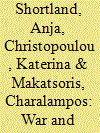

|
|
|
|
|
| Publication |
2013.
|
| Summary/Abstract |
The literature on war economies argues that prolonged civil wars have an economic logic: certain groups may obtain material gains from committing acts of violence and hence resist peacebuilding efforts. Objective tests of these predictions have so far been limited, as corruption and conflict prevent the collection of reliable economic data on the ground. Remote sensing and Geographic Information Science techniques enable us to overcome these problems of terrestrial data collection. Electricity consumption manifested as night-time light emissions recorded in satellite images is proposed as a proxy for changes in disposable income in Somalia's cities. The nightlight images provide striking illustrations of economic decline and recovery and clearly show the contrast between the stable regions of Northern Somalia and the chaos and anarchy of Southern Somalia. Based on geospatial analyses of settlement patterns in Somali cities, we argue that specific metrics of light output can be used to proxy for the incomes of different social groups. We use geo-coded conflict event data to analyze the economic impact of conflict on local light output and therefore incomes. We find a significant peace dividend for poorer households located at the margins of cities, which benefit both from local stability and more peaceful conditions in the country as a whole. By contrast, the central business districts are relatively well insulated from the effects of local conflict, and violence in Mogadishu has positive effects on light output from cities where humanitarian aid agencies are located. Future peace initiatives need to confront these economic incentives for continued conflict and state failure in Somalia.
|
|
|
|
|
|
|
|
|
|
|
|
|
|
|
|
|
|
|
|
|